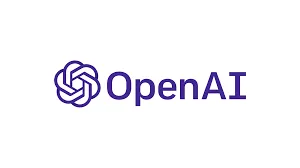Introduction
As an AI language model, ChatGPT has established itself as one of the most popular and efficient tools for natural language processing. However, it’s worth noting that ChatGPT is not the only AI language model out there. Many other competitors have emerged in recent years, each offering unique features and benefits. Here are some of the most prominent ChatGPT competitors you should be aware of:
GPT-3

GPT-3 (Generative Pre-trained Transformer 3) is perhaps the most well-known ChatGPT competitor. Developed by OpenAI, GPT-3 is a language model that can generate natural language text that’s almost indistinguishable from text written by humans. With its vast database of pre-existing language patterns, GPT-3 can also translate text into different languages and summarize complex information.
BERT

BERT (Bidirectional Encoder Representations from Transformers) is a Google-developed language model. Like ChatGPT and GPT-3, BERT is a transformer-based language model that’s pre-trained on large amounts of text data. BERT is useful for natural language understanding tasks such as sentiment analysis and question answering.
XLNet
XLNet is another language model that’s similar to ChatGPT and GPT-3. Developed by researchers at Carnegie Mellon University and Google, XLNet uses an unsupervised learning approach that allows it to generate more accurate and diverse text. XLNet is particularly useful for tasks such as text classification, machine translation, and text summarization.
RoBERTa

RoBERTa (Robustly Optimized BERT Approach) is a variation of the BERT language model. Developed by Facebook, RoBERTa uses a more extensive training corpus and more advanced pre-training techniques, which makes it more accurate than BERT in certain tasks. RoBERTa is particularly useful for functions such as natural language inference, sentence classification, and named entity recognition.
T5
T5 (Text-to-Text Transfer Transformer) is a language model that Google developed based on transformer architecture. What makes T5 unique is that it can perform a wide range of natural language processing tasks, including machine translation, summarization, and question-answering. It can also generate text from prompts, making it a versatile tool for language generation tasks.
GShard
GShard is an advanced machine learning technology developed by Google Research that has the potential to revolutionize the field of natural language processing (NLP). It is a distributed machine-learning framework that allows large models to be trained across multiple machines. This helps in enabling the development of more complex and sophisticated language models.
GShard is able to tackle some of the biggest challenges in NLP, including improving accuracy, reducing training time, and handling large datasets. This cutting-edge technology has the potential to transform the way we process and analyze natural language data, opening up new possibilities for machine learning applications in various industries.
Conclusion
In conclusion, while ChatGPT is one of the most popular and widely-used language models, many other competitors out there offer unique features and benefits. Whether you’re looking for a tool for natural language understanding, text generation, or other NLP tasks, it’s worth exploring the various options available to you.
Related
- SEO Powered Content & PR Distribution. Get Amplified Today.
- Platoblockchain. Web3 Metaverse Intelligence. Knowledge Amplified. Access Here.
- Source: https://www.analyticsvidhya.com/blog/2023/03/chatgpt-vs-the-world-a-comparison-of-conversational-ai-models/